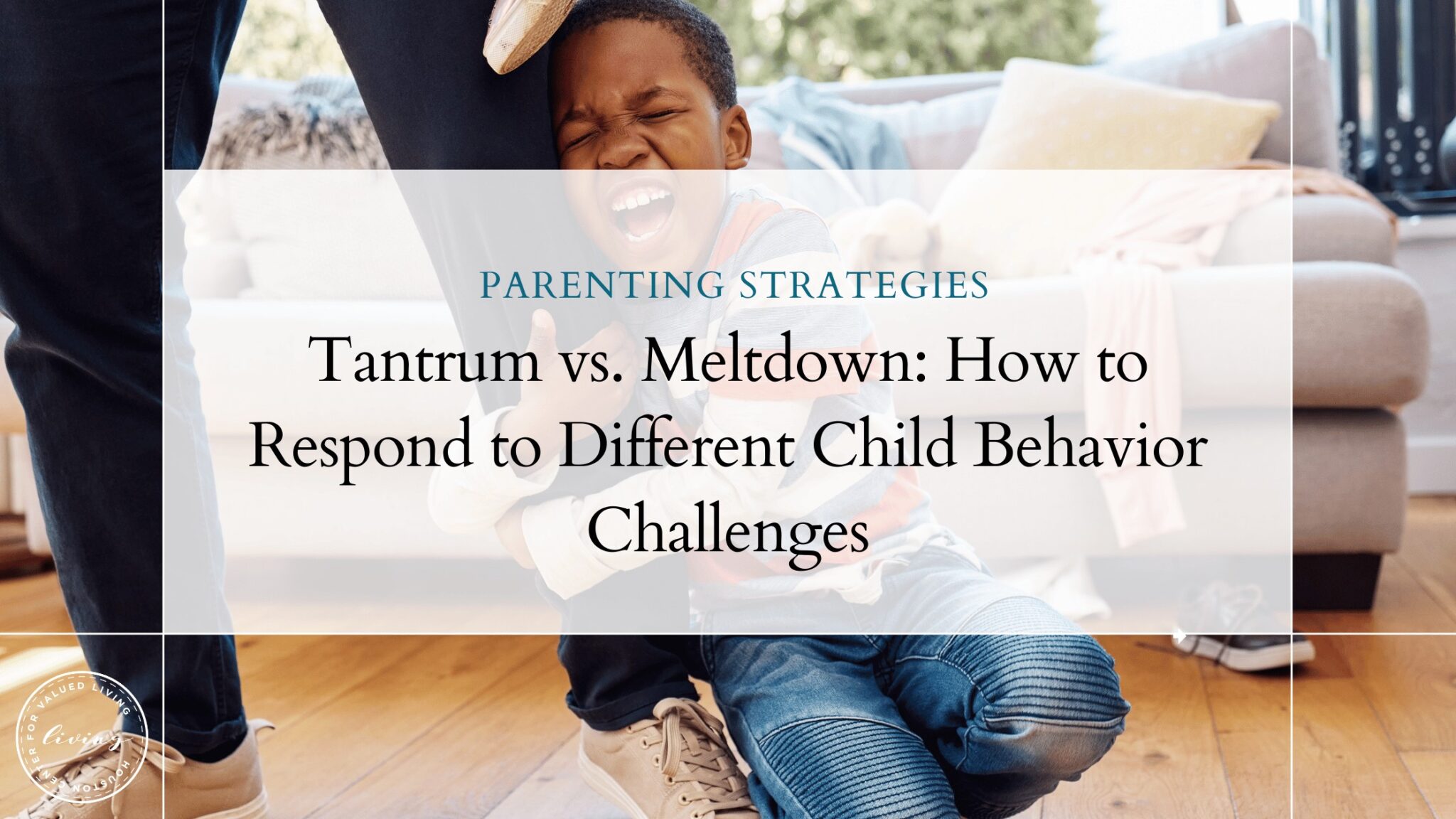Ever found yourself wondering if your child is just trying to get their way, or if they’re truly overwhelmed by their surroundings? When it comes to managing child behavior issues, understanding the difference between a tantrum and a meltdown can make a world of difference. These terms often get mixed up, but they describe two very different experiences. Knowing which one you’re dealing with can help you respond in a way that’s more effective for your child—and a little less stressful for you.
1. What is a Tantrum?
- Definition: A tantrum is a way for a child to express frustration or anger, usually when they want something but don’t have the words to ask for it yet. Tantrums are a normal part of childhood, but knowing how to manage them is key to effective child behavior management.
- Characteristics:
- Goal-Oriented: Tantrums usually have a purpose. For example, a child might throw a fit when they’re told they can’t have a snack before dinner.
- Some Control: Even in the middle of a tantrum, a child might still be somewhat aware of what they’re doing. If they realize their behavior isn’t working—like if you’re calmly ignoring them—they might switch things up.
- Looking for Attention: Kids often check to see if anyone is watching during a tantrum, and they may adjust their behavior based on the reactions they get.
- Examples:
- Crying, yelling, or stomping when they hear the word “no.”
- Throwing themselves onto the floor at the store because they can’t get a toy.

2. What is a Meltdown?
- Definition: A meltdown is a reaction to sensory or emotional overload. Unlike a tantrum, it’s not about getting something; it’s a way of releasing feelings when everything becomes too much. For parents working through child behavior management challenges or those considering behavioral therapy for children, recognizing meltdowns is an important step.
- Characteristics:
- Not Goal-Oriented: Meltdowns aren’t about achieving a specific outcome. They often happen because of sensory overload—like too much noise or too many people—or big feelings like frustration or anxiety.
- Loss of Control: During a meltdown, a child often can’t control what they’re doing. Even if you move them to a quieter space, it may take time for them to settle down.
- Overstimulation: Meltdowns can be triggered when a child is tired, hungry, or overstimulated. Kids who are sensitive to noise or crowds might find these environments especially challenging.
- Examples:
- Screaming or hitting when they’re in a loud, crowded place.
- Crying uncontrollably and covering their ears during a noisy event, even if they were excited to go.
Key Differences Between Tantrums and Meltdowns:
- Control: With a tantrum, kids have some control and might adjust their behavior based on how you respond. In a meltdown, they’ve lost control and need support to calm down. For parents working with a parenting counselor or following a parent management training program, this distinction is vital.
- Motivation: Tantrums are often about wanting something, like a treat or attention. Meltdowns are more about feeling overwhelmed and needing help to manage those feelings. Recognizing this can make it easier to tailor parenting strategies that work best for your child’s needs.
- Duration: Tantrums might stop if the child gets what they want or realizes their behavior isn’t working. Meltdowns tend to last until the child feels safe and calm again.
How to Respond to a Tantrum or Meltdown:
Knowing whether your child is having a tantrum or a meltdown can make a big difference in how you handle it. Here are some practical tips that align with many child discipline techniques and parenting strategies:
- For Tantrums: Focus on setting clear boundaries, staying consistent, and using what’s called “differential attention”—ignoring the negative behavior while reinforcing positive behavior. It’s not easy, but staying calm and not giving in will help in the long run. These are core principles in many parent management training programs.
- For Meltdowns: Find a quiet space, reduce sensory input, and offer comfort without trying to reason with your child until they’ve calmed down. A calm presence can make all the difference when everything feels too overwhelming. This approach is often supported by behavioral therapy for children and other techniques taught by parenting counselors.

Final Thoughts:
Handling these moments isn’t always easy, but recognizing the difference between a tantrum and a meltdown can help you and your child get through them. It’s not about “fixing” the behavior; it’s about offering the right kind of support when they need it most. A little understanding goes a long way toward making those tough moments easier—for both of you. Want some extra support with these tricky moments? Reach out for a consultation to learn more about how parent management training can offer practical guidance tailored to your family’s needs. Let’s work together to make those challenging moments a little easier.

Christina Moak, LPC has a passion for helping children, adolescents, and parents with a variety of concerns including behavioral issues, school performance, anxieties, social issues, depression, and life transitions.
Other parenting articles:
- 5 Common Timeout and Ignoring Mistakes – and How to Correct Them
- 15 minutes of play each day can keep the tantrums at bay
- How to prepare your firstborn for your second born
- An open letter to the mother who feels guilty “taking a break”
- The benefits of playing with your child
- How can dads help with the mental load?

